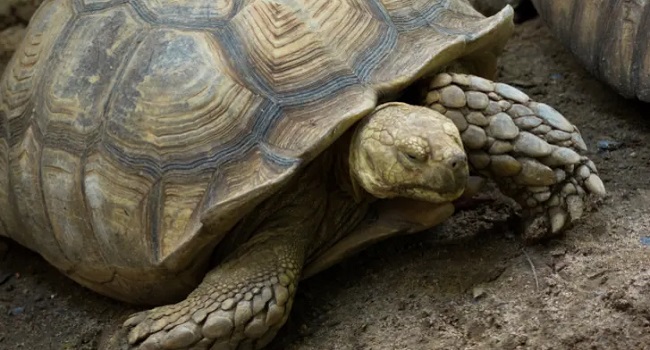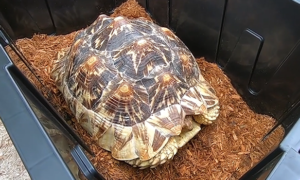In a lot of cases, we worry if it’s too cold for our sulcata tortoises to be outside, but if the weather is too hot, this can be a problem, too. Sulcata tortosies can tolerate warmer weather better than some other species, but it’s important to be mindful of signs of tortoise overheating.
The smaller the tortoise, the easier it is for it to overheat. So, even putting baby tortoises outside for an hour in hot weather, can cause overheating, especially without proper shade and water.
Overheating in Tortoises
Signs that your tortoise is overheating include:
- Gapping mouth
- Drooling or foaming at the mouth
- Blowing bubbles from the nose
- Runny nose
- Weakness
- Listlessness
- Unable to walk
- Poor hind-limb responsiveness
Tortoises can’t sweat. Instead, tortoises release saliva, which evaporates to cool off the body, similar to how sweating cools off our bodies. But, there’s a limit to how effective this can be. Over time, overheating can cause serious damage and death.
Prevent Overheating in Tortoises
The key is to prevent overheating is to provide plenty of shade and water.
Have bushes, and taller grass, like pompas grass for shade.
In many cases, a sulcata tortoise will dig a burrow to cool off, or cover itself with mud, while splashing around in a shallow pool or puddle of water. Don’t discourage natural tendencies to cool off. If you don’t want your tortoise making his own burrow, make a safe tortoise burrow.
If you notice your baby tortoise is showing signs of overheating in an inside enclosure, lower the temperatures of the basking area, as well as the overall ambient temperature.
How to Cool Off a Hot Sulcata
If you think your tortoise is overheating, immediately bring him inside and let him soak in cool water.
Spray large tortoises with the water hose. Make a watering hole and coax the tortoise into it. If you’re able to lift the tortoise, place it in a shallow pool of cool water.





